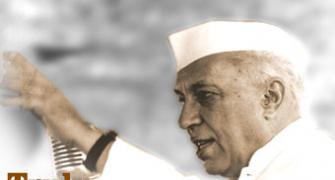 Trade between India and Australia has dipped sharply by nearly 14 per cent to $15.2 billion in 2013 as compared to the previous year, according to official data.
Trade between India and Australia has dipped sharply by nearly 14 per cent to $15.2 billion in 2013 as compared to the previous year, according to official data.
The total two-way trade between the two countries stood at Australian dollars 15.2 billion last year, a decrease of 13.9 per cent on 2012 and the lowest in the last five years.
In 2008, the total trade was recorded at Australian dollars 18.9 billion whereas in 2012 it stood at Australian dollars 17.7 billion.
The decline in the trade has been attributed to factors like drop in gold imports from Australia, decline in coal prices as well as slowing down of the Indian economy.
The latest drop in the total trade volume has been because of a decline in quantity of gold imports from Australia and a decline in coal prices, said Anil K Sharma, First secretary, Economics and Commerce, Indian High Commission.
However, India has been keen to expand its exports, Sharma said adding that Indian companies have been participating substantially in various trade and sourcing fairs held in Australia.
"ITPO will be participating in a Trade Fair in Perth this year and India will be the partner country.
“Apart from resources and energy, we have significant business in education and skills as well as IT-based services," Sharma said.
Australia India Institute director Amitabh Mattoo, meanwhile, reiterated the need for the newly elected ‘Team Modi’ to now make the Free Trade Agreement with Australia as a priority.
Citing that the most important reason for the slackening of bilateral trade was the slowing down of the Indian economy and the huge tariff and non-tariff barriers that exist on both sides, Mattoo said, "An early conclusion of the negotiations on a Comprehensive Economic Cooperation Agreement -- with a minimal negative list --
"It is a win-win for both countries.
“It is estimated that in 20 years after the conclusion of a free trade agreement, Australia would gain Australian dollars 43 billion in real gross domestic product while India's real GDP gain would be Australian dollars 46 billion," he said.
"The new Narendra Modi-led government, with its commitment to economic reforms and greater trade, must make the signing of a FTA with Australia a top priority," he said.
Trade between Australia-India is widely seen as less than it could be and accounts for just slightly over three per cent of total Australian trade in goods and services.
Unlike India, Australia's total trade with China in 2013 jumped to Australian dollars 150 billion, an increase of over 20 per cent on 2012.
China accounts for almost one quarter of Australia's two way trade and is also the country's largest two-way trading partner, the largest export market (Australian dollars 102 billion) and largest source of imports (Australian dollars 49 billion).
Australian exports to India have mainly been in the sectors of coal, gold, copper and education services.
A recently released Australian International Business survey found only three per cent of Australian companies nominated India as the most important market in terms of international revenue.
Education remained as the only industry in which over majority of Australian companies ranked India as the most important market.
Even for software sector, the top three markets for Australian companies were the US, the UK and New Zealand.
Last year's AII report 'Unfinished Business:Re-imagining the Australia-India Economic Relationship' said Australia should diversify its economic relationship with India or risk forfeiting a stake in one of the world's largest emerging markets.









